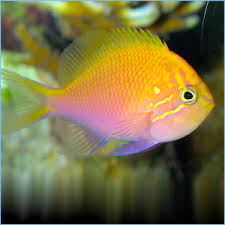Dragons and Symbolism in Traditional Chinese Performing Arts

The dragon is an enduring and highly significant symbol in Chinese culture, transcending many aspects of everyday life, from religious beliefs and philosophy to the world of art. In particular, the dragon holds a profound presence in Chinese traditional performing arts, such as Chinese opera, dance, and martial arts. These forms of performance art not only showcase China’s cultural richness and heritage but also reflect deep symbolic meanings tied to dragons. The dragon, with its mythical and divine attributes, serves as a potent symbol of power, transformation, and spiritual connection with the natural world.
In this article, we will explore the role of the dragon in various traditional Chinese performing arts, examining how the dragon’s symbolism is integrated into dance, theater, martial arts, and puppetry. We will delve into the mythological significance of dragons and how they are represented in performance traditions, connecting the divine with the human world. Moreover, we will analyze the evolution of dragon imagery and its importance as a symbol in cultural performances across China’s history.
1. The Mythological Significance of the Dragon in Chinese Culture
The dragon has a multifaceted role in Chinese mythology, making it a powerful symbol in the performing arts. In traditional Chinese thought, the dragon is often viewed as a benevolent and beneficent creature, embodying qualities of strength, wisdom, prosperity, and luck. The dragon is seen as a cosmic being that connects heaven and earth, embodying a balance between the yin and yang energies of the universe. This makes it not only a symbol of royal authority and power but also a creature that represents transformation, harmony, and the forces of nature.
The importance of the dragon as a cultural symbol can be traced back to the Zhou Dynasty (1046–256 BCE), where the dragon became associated with the emperor as a divine protector. In ancient Chinese traditions, the emperor was often referred to as the “Son of Heaven”, with the dragon serving as a direct connection between the ruler and the divine. This relationship is reflected in Chinese performing arts, where dragons are often depicted as powerful forces that transcend the physical world.
2. The Dragon in Traditional Chinese Opera
One of the most prominent places where dragons appear in Chinese culture is in Chinese opera, particularly in Peking Opera, which is one of the most famous forms of traditional Chinese theater. In Chinese opera, dragons are often portrayed in both symbolic and physical forms. The presence of the dragon is usually connected to themes of power, royalty, and divine protection, with the creature’s mythological traits emphasized through theatrical performance.
In Peking Opera, the dragon is typically used to symbolize the emperor’s authority and the divine power that he wields over the people. For example, during an imperial scene, actors may wear dragon robes, which feature embroidered dragons, to visually represent the emperor’s connection to the divine and his control over the state. The dragon’s imagery can also be present in the elaborate stage designs and props that represent palaces, temples, and royal courts. The dramatic performances often include mythological elements in which the dragon is depicted in battle or in the service of the emperor, aligning with its role as a symbol of strength and protection.
Dragons in Chinese opera are also associated with supernatural powers. For instance, in some performances, the dragon may embody an immortal being or a divine messenger sent to protect or guide the protagonist. The movement and gestures of the performer portraying a dragon are often exaggerated to reflect the mystical, almost otherworldly nature of the creature, capturing the audience’s imagination with dynamic expressions of power, agility, and grace.
The integration of dragon motifs into the costumes and makeup of opera performers plays a key role in enhancing the symbolism. In Peking Opera, performers may apply intricate dragon-themed face paint to highlight their role as imperial or divine beings. These dragon-themed face designs are meticulously applied, with details emphasizing the creature’s eyes, fangs, and scales to create an aura of awe and reverence.
3. Dragon Dance and Its Symbolism
Another prominent performance that showcases the dragon in Chinese culture is the Dragon Dance. The Dragon Dance is a traditional Chinese folk dance performed during important celebrations, most notably during the Chinese New Year festivities and various festivals. The dance features a large, colorful dragon puppet made of cloth or silk, which is manipulated by a team of dancers holding poles. The dragon puppet is typically several meters long, often featuring vibrant colors, intricate designs, and elaborate decorations to symbolize strength, wealth, and good fortune.
The dragon dance is believed to bring good luck and prosperity, particularly during the Chinese New Year, when it is thought to drive away evil spirits and usher in a prosperous year. The movements of the dragon, which mimic the graceful, undulating movements of the mythical creature, are designed to symbolize the harmony between heaven and earth, with the dancers’ synchronized efforts representing a collective unity toward achieving success and peace.
In many parts of China, the Dragon Dance is not just a form of entertainment but also an important spiritual ritual. It is a way for communities to come together and honor the power of the dragon as a symbol of the collective well-being of the people. The performance of the dance is often accompanied by the beating of drums and the sound of cymbals, which are believed to help summon the dragon’s power, while also imbuing the performance with vibrancy and energy.
4. The Dragon in Chinese Martial Arts
In traditional Chinese martial arts, the dragon is frequently invoked as a symbol of strength, speed, and grace. The concept of the dragon in martial arts often focuses on the dragon’s ability to control the forces of nature and combat adversaries with precision and fluidity. Martial artists who train in styles such as Tai Chi or Wing Chun may incorporate dragon-inspired movements into their forms, using fluid, serpentine motions that evoke the power and agility of the mythical creature.
The concept of the dragon in martial arts can be traced back to ancient Chinese philosophies, particularly Taoism, which teaches balance, flexibility, and the mastery of internal energy, or qi. The dragon’s movement in martial arts is often symbolic of the way the practitioner should channel their inner energy — fluidly, gracefully, and with purpose. In many martial arts demonstrations, the dragon is depicted as a guarding or fighting figure, representing the martial artist’s journey toward self-mastery and the harmonization of mind, body, and spirit.
In Chinese martial arts legends, there are stories of famous masters who were said to embody the spirit of the dragon. One notable example is the legend of the “Dragon of Wudang”, a reference to the martial artists from the Wudang Mountains who practiced Taoist martial arts and were believed to have achieved great spiritual and physical strength through their training.
5. The Dragon in Puppetry and Shadow Plays
The dragon also plays a role in Chinese puppetry and shadow plays, particularly in the form of large, intricately designed dragon puppets that come to life during performances. Traditional shadow puppetry, a form of storytelling in which figures are projected onto a screen, often features dragons in the form of shadow figures that add an air of mystery and spectacle to the performance.
In Chinese puppet theater, dragon puppets are typically used to represent powerful deities, spirits, or mythical creatures, often symbolizing the forces of nature and the elements. Dragon puppets are also featured in elaborate festival performances and parades, much like those seen in the Dragon Dance, where they serve as symbols of celebration and prosperity.
6. The Dragon’s Continuing Legacy in Modern Performances
Today, the dragon continues to inspire and influence contemporary Chinese performing arts. Although the form and style of performances may have evolved, the dragon remains an important symbol of power, resilience, and cultural heritage. In modern Chinese theater, dance troupes, and film, dragons continue to be used as symbols of strength and prosperity. Whether in musicals, movies, or television series, the dragon is a timeless symbol of Chinese identity, culture, and mythology.
7. Conclusion
The dragon’s symbolism in traditional Chinese performing arts is rich and multifaceted. From the Peking Opera to Dragon Dances, martial arts, and puppetry, dragons represent power, grace, divine protection, and spiritual wisdom. Their presence in performances reflects both cultural heritage and mythological beliefs, bringing ancient traditions to life while preserving their symbolic significance for future generations.
Through these performances, the dragon continues to inspire awe, respect, and a deep sense of cultural pride among those who experience them. As a bridge between the human and the divine, the dragon remains a central figure in the performing arts of China, a symbol of good fortune and an everlasting cultural icon.

